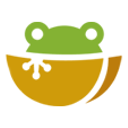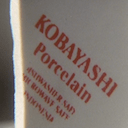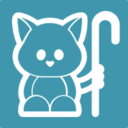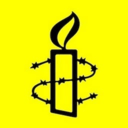Projects
My personal highlights reel: Products shipped, achievements unlocked, and impact delivered.
COMA @ UH IfA
2023

Comets are small, icy bodies left over from the process of building planets. They provide clues to our solar system’s formation and possibly even the origins of life on Earth. Despite being one of humanity’s oldest noted phenomena, comet data and imagery are scattered globally and not easily accessible to astronomers, impeding science.
COMA changes that, aspiring to become the global resource for comet imagery, photometry, and molecular production data to help drive science on small solar system objects. Built in conjunction with NASA and the University of Hawaii’s Institute for Astronomy .
On the team, I’m primarily responsible for coding, technical design, and architecture on our backend database APIs, processing pipelines, and ingestion. Our ingest pipelines continually process scientific imagery and other data into a form astronomers can easily use, and the APIs fuel querying the system by scientists as well as processing from our science backend and sources like NASA’s JPL. It also feeds our really nice frontend. Ingest pipelines and our datalake are orchestrated via Airflow , and our APIs are built on the excellent and highly performant Go Fiber framework.
I’m really, really enjoying working on this with all its technical and scientific challenges. Learning heaps both code- and astronomy-wise. Very keen to do more work like this and even moar ambitious projects. So, if you found this via search and have interesting Astro/physics problems and projects, or are interested in chatting with me about your astro/physics PhD program (I’m actively looking), or happen to be NASA, ESA, JPL, RocketLabs, VG or some other place doing cool space work, mail me .
harsh
2020

Habits make us. We become what we do regularly.
harsh is habit tracking for geeks. A minimalist, command line, open source app for tracking and forging habits.
After trying an exhaustive number of habit trackers that didn’t help build habits, I took the best ideas, distilled features, ruthlessly simplified, and provided easy ways to install (and onboard to) the app via homebrew , snap , and OS- and arch- specific binaries via an automated Github Actions release pipeline. It works everywhere.
There’s more about it on the release post . This was seriously fun. And probably marked Go as a mere part of my toolset to my go-to monkeywrench for heavy lifting and backends (whereas previously it was probably ruby and python.).
AArk Species Assurance App
2017 – Sunset mid-2025

1/3 of the world’s ~8750 amphibian species are critically endangered or on the verge of extinction.
The AArk Species Assurance app allowed zoos and conservation groups to coordinate rescue and science programs globally, and helped them bring several at-risk species back from the brink of extinction.
Amazingly, in production 14 years, running on ruby using the Padrino framework and despite time and traffic. Major upgrades happened in 2017 and the very end of 2022.
The app and program was a joint partnership between WAZA and the IUCN SSC .
I loved working on this. Seriously keen to do more work on wildlife, rewilding, or conservation projects. If you’re an NGO and found this via search and have some interesting projects or problems that need volunteer (or even full-time) help, email me .
DataKind SG
2015

DataKind is a datascience-for-good charity, helping NGOs answer difficult data science and analytics questions key to their effectiveness and helping them use and collect their data better.
When DataKind decided to expand to five global chapters, a trio of co-founders and I put forward Singapore as a site.
We won, started up, and I acted as Director of Operations for two years.
Kobayashi
2012 – Sunset mid-2015

Kobayashi is named for the majordomo of the infamous Keyser Söze in The Usual Suspects and Star Trek’s no-win mission scenario (since blog software gets zero dev cred.).
Nothing in Rubyland did what I considered essential. So, I took the best ideas I’d seen, shmooshed them together, and created something super fast, hackable, easy-to-use, and with a tiny code base (<250 LOC!). I had a blast coding this and learned a surprising amount for what seems like such a simple project as I layered on more complex functionality.
Tweetstreamer
2011 – Sunset late 2014

A Leadnow project during the 2011 Canadian Federal election National Debate to allow a large constituency to discuss and understand details of policy arguments in the debate.
The app itself pulls tweets out of the twitter firehose for any arbitrary hashtag(s) (or any text in the tweetstream, for that matter) and dumps it into a database and then pulls it out slowly in a nice, ordered waterfall cascade-style for coherent discussion and response.
www.leadnow.ca
2010 – Sunset late 2014

Leadnow contacted me and asked for help getting their fledgling operation off the ground tech-wise for Canada. The site was light, fast, and very scalable with an easily extensible codebase that was put up in record time and ran their online presence until late 2014.
My favourite thing about this entire project was that I did the initial work and pushed www.leadnow.ca live globally from a lovely little island in the Andaman Sea in Thailand while on vacation, digital nomad-style at a time when that was very rare and not even “a thing”. I really need my life to be a bit more like that, more often. It definitely proved I could do remote work from anywhere despite geography and timezones.
Catherder aka Tess the TOIL-bot
2010

Catherder came about since I work a lot with people whose big problem is that they work way too long and hard. Unhealthy overtime becomes the norm, burnout follows, and good people end up leaving organizations that can ill-afford the loss.
Tess allowed us to see trending counterproductive overtime, stick to legal TOIL (Time Off In Lieu) obligations, vacation, and sick days, and make sure staff stayed healthy, rested, and firing on all cylinders. Audit compliant, one-click approvals via email, nice reporting and alerts, this was an “off book” project with an easy weekend-to-PoC solution.
Catherder was further enhanced inside Pivotal Labs and rolled out for all APAC staff across 5 countries.
I still think its simplicity and ease-of-use for manager and staff make it far superior to most commercial HR systems I’ve seen.
GetUp Rebuild
2010

A big problem for fast-moving activist organizations is they rarely have time or resources to focus on campaigning infrastructure until it starts to hurt core execution and campaigns.
Brought in as Director of Online Campaigning and IT in 2009, our team redesigned and rearchitected the GetUp core campaigning engine in Rails for rapid response campaigning, action flexibility, email blasting at “Obama-esque” campaigning speeds, salient metrics and A/B testing, and an elastic cloud architecture designed to handle massive, yet intermittent “fireballing” of the site. As a benefit, using cloud-first technologies (which was rare back then), it minimized costs during off-peak email blasts and TV media by backing off resources.
Lunchmeets
2007 – Sunset late 2013

Lunchmeets was designed to solve a seemingly small, but big problem Amnesty had: people not really knowing the people they worked with. Collaboration and sharing are vastly more difficult with people you don’t know (and trust), and a showstopper if you’re trying to change an organizational “gatekeeper” culture. This app randomly matched people up to go to lunch or coffee. Simple, but highly effective.
Another “off book” project, hugely successful with users and had been running in production since mid 2007 to late 2013 with thousands of Lunchmeets gone-on and over a third of all full-time staff participating.
Amnesty.org Relaunch
2008

Amnesty International needed a complete overhaul of their web platform, online branding, and ability to reach and engage supporters in non-traditional locations globally.
A massive project involving overhauls of everything from underlying technologies, to branding, to content, to the document library at the heart of Amnesty’s human rights research, this comprehensive relaunch of the amnesty.org flagship site delivered capabilities the organization had never had before as well as a key deliverable for faster turnaround for digital campaigning and rapid response actions.
GPC Federal Leadership Canvassing
2006 – Sunset late 2007

This was the very first Rails app I ever built, way back in 2006 when the framework was at 1.2.
Built over a sleepless weekend to meet the urgent need to get good information on voting patterns for the original federal leadership campaign of Elizabeth May of the Green Party of Canada . It was simple, tightly featured, and did precisely what was needed.
It gave the national campaign team daily statistics on canvassed ridings which was critical for understanding where to focus resources for maximum effectiveness to win the election.
I like to think this app helped contribute to May coming from behind in the polls to beat her opponent by a 2:1 margin. Elizabeth herself actually personally thanked me on national television with a really nice mention in her victory speech in Ottawa.
Whuffie beast
2007 – Sunset mid 2011

Knowledge management is a deep problem for all organizations. Vendors intentionally confuse buying software with creating a culture of knowledge sharing and findability.
Whuffie tried to solve the problem my new organization had of being great at writing things down (explicit knowledge), but with low organizational learning value. Tacit knowledge in peoples’ heads had more value but was inaccessible, so Whuffie was an experiment to deal with questions and dialogues and socially reward people breaking down a “gatekeeper” culture by creating a marketplace for knowledge and help while encouraging information sharing as something valued by the organization.
For scifi fans, the project takes its name from Cory Doctorow’s Down and Out in the Magic Kingdom where Whuffie, a form of post-scarcity digital reputation and ersatz currency, replaces money and is a proxy for societal value.
IndyBot
2004 – Sunset early 2012

This ML system extended from my MSc work methodically sifting satellite imagery to try to find undiscovered archaeological sites.
The idea was inspired by NASA’s remote sensing help in the 1992 discovery of Iram of the Mighty Pillars , the famed Atlantis of the Sands in Arabia’s Empty Quarter (the Rub’ al Khali/الربع الخالي), via ground penetrating and Synthetic Aperture Radar (SAR) from satellites.
If you’ve run across this via search, I love applying technology to archaeology, so if you have an interesting project, please mail me .
virusNotification
1999 – Sunset 2003
